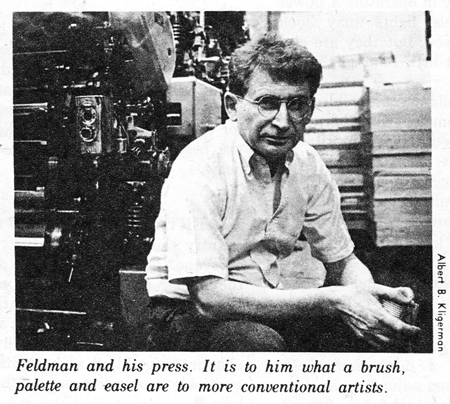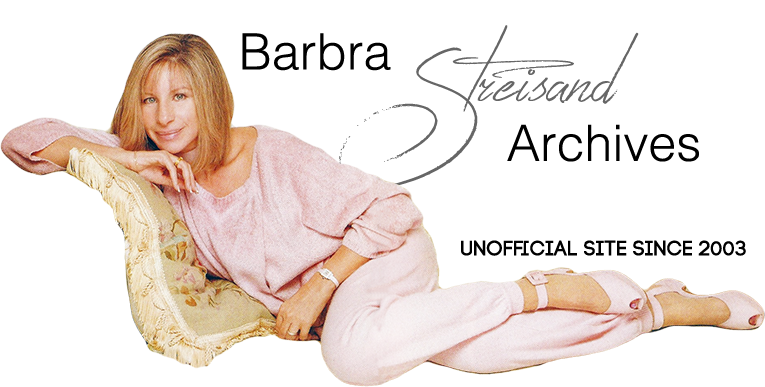Sunday Bulletin Magazine

July 31, 1966
Eugene Feldman Does Unorthodox Things with Offset Presses, and Museums Exhibit the Results
By JOSEPH ADCOCK


BARBRA STREISAND has seen representations of her mercurial face in countless places and countless styles, but never has she seen anything quite like her portrait on the cover of this issue.
If its creator—a quiet, engaging man in his mid-40s named Eugene Feldman—can arrange it, she may, however, soon see a portrait like this and have it for her own.
Feldman is a commercial printer who is also an artist, or an artist who is also a commercial printer. He finds it hard himself to say which description is more accurate. In any event, his printing business is successful and profitable, and his art is winning him widespread recognition, and exhibitions in many museums.
Using methods which startle printers and artists alike, Feldman for several years has been turning out a succession of striking photo-off- set lithographs. Their starting points have ranged from multiple exposures of a Pakistani dancer to a handful of Colorado wildflowers.
 His Streisand portrait, a recent work, will serve to illustrate how he seeks subjects and what he does with them.
His Streisand portrait, a recent work, will serve to illustrate how he seeks subjects and what he does with them.
When he heard that Miss Streisand was to come to Philadelphia one night last winter for the taping of a portion of her television special Color Me Barbra at the Museum of Art, Feldman offered to serve as a photographer on behalf of the Museum to preserve the evening on movie film.
He shot 200 feet of 16-millimeter color film, met Miss Streisand and talked with her briefly, although he didn’t mention that she was to be the subject of a new art form. Later, Feldman painstakingly scanned all the 7,680 individual frames of film which make up 200 feet of movies, searching for ones which suited him.
“I wanted to kind of change her personality a little," he explained later. “You usually think of her as a brassy little girl from Brooklyn. But l saw her as being absorbed by her setting. I was reaching for something quiet and gentle, a sort of Mona Lisa in an art museum."
Feldman achieved this transformation by greatly magnifying the chosen frame and breaking it down into its various color components, using photographic filters in a carefully planned distortion of the process by which a conventional printer makes standard separation plates for normal color printing.
Feldman’s color separations next go onto an offset press, where they may be inked with improbable colors and given multiple press runs in various combinations until the result pleases him —a result which may resemble the original to about the same degree that a Picasso “Woman” resembles the women we see every day.
The version of his Streisand portrait that finally received Feldman’s approval—the one which appears on the Magazine’s cover— required seven runs through the press. Feldman hopes to present one to Miss Streisand, and he may have an opportunity to do it Tuesday, when the singer is scheduled to appear in concert at John F. Kennedy Stadium.
The lithographs were done at Feldman’s Falcon Press, a conventional-looking printing job shop on center city’s Ranstead Street that doubles, at night, as a studio for its owner’s avant-garde experimentation. Feldman, the artist, uses the same equipment to produce his unique lithographs as Feldman, the printer, uses to make brochures, catalogues or posters.

End.
[ top of page ]
